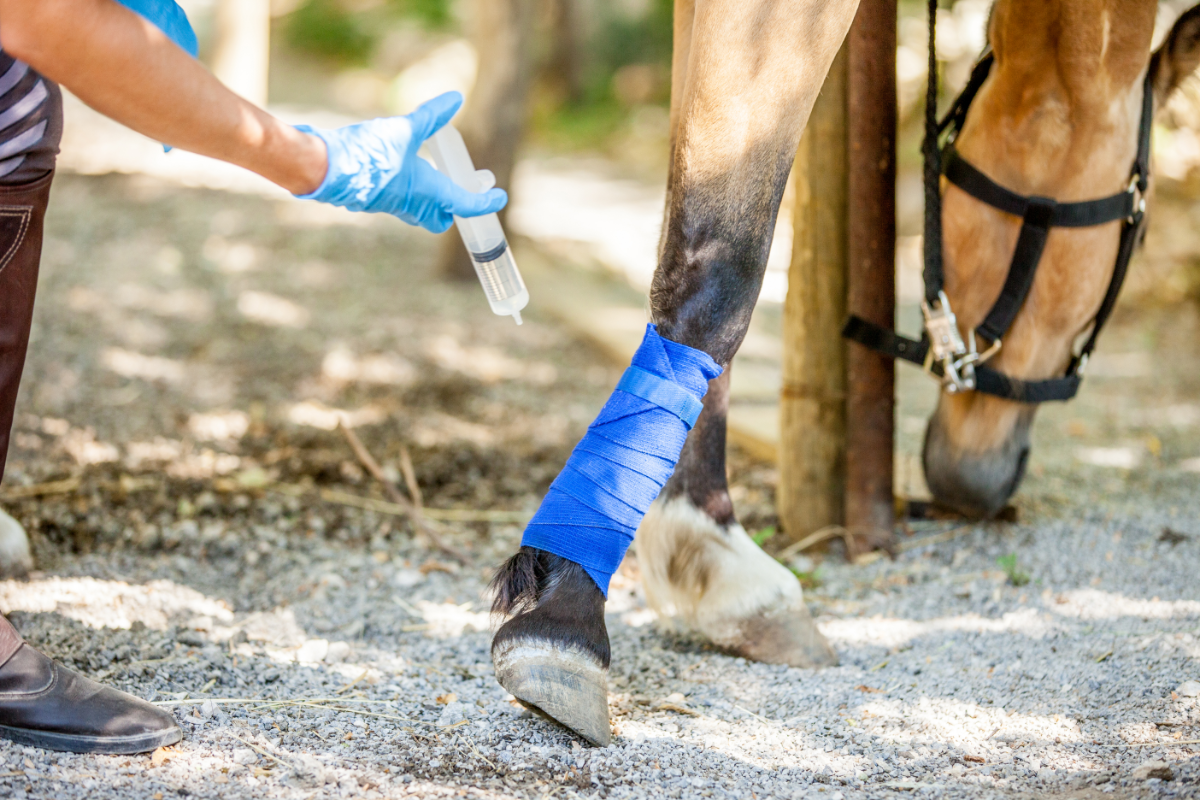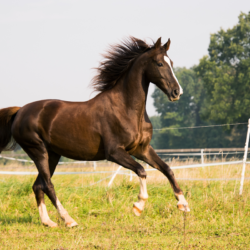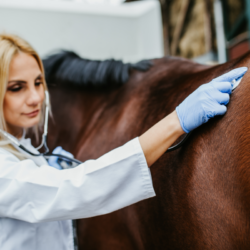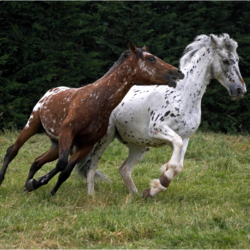Lymphangitis is a serious condition that can affect horses of all breeds and ages. Often caused by a bacterial infection, the condition manifests itself as severe and painful swelling of the limbs. Understanding the causes, symptoms, diagnosis and treatment of lymphangitis is essential to the health and well-being of your horse.
What causes lymphangitis?
Lymphangitis is usually caused by a bacterial infection that enters the horse’s subcutaneous tissues. This infection can occur as a result of a small wound, which is often difficult to detect, or damaged feet, particularly in horses living in damp environments. Bacteria such as streptococci, staphylococci (Staphylococcus aureus) and escherichia coli are frequently involved. These pathogens penetrate the skin barrier, triggering inflammation and severe oedema.
The entry point of infection may be a simple abrasion, an insect bite, or another skin condition such as mud scab. The resulting inflammation causes severe, painful swelling of the affected limb. If not treated promptly, the infection can spread and cause chronic damage, making treatment more complicated. So it’s vital to keep a regular check on the condition of your horse’s limbs, especially if he’s living in damp conditions.
What are the symptoms of lymphangitis?
The symptoms of lymphangitis in horses are fairly distinctive. The most obvious sign is marked swelling of a single limb, often a hind limb. This swelling can make the limb two to three times wider than normal. Lameness is another common symptom, aggravated by the intense pain felt when palpating the swollen area.
Other signs include skin oozing and sometimes fever when the engorgement is severe. Lymphangitis often starts from the foot or a small wound and spreads rapidly. In severe cases, the oedema may reach the hock or even the stifle. The affected skin can become very tight and painful to the touch, causing marked lameness.
General symptoms such as hyperthermia, loss of appetite, despondency, trembling, excessive sweating and increased respiratory rate often occur, especially in cases of intense pain or fever. Inflammation that is not treated promptly can lead to complications, including chronic deformity of the limb and thickening of the skin.
How is it diagnosed?
Diagnosis of lymphangitis in horses is based primarily on clinical observation of the symptoms. The vet will examine the swollen limb and look for characteristic signs such as swelling, pain on palpation and the presence of skin oozing. A swab from the wound, if identifiable, can help identify the pathogen responsible.
However, it is common for the results of swabs to show mixed flora or to come back negative. Bacteria that are difficult to culture or have already been eliminated by the horse’s immune system often cause this result. Despite these challenges, treatment should be initiated to control the inflammation, even without precise identification of the pathogen.
Blood tests can also be used to assess the horse’s general condition and detect any systemic infection. Imaging, such as ultrasound scans, can help assess the extent of oedema and inflammation. Rapid diagnosis is essential to prevent chronic complications and ensure rapid recovery.
What treatments are available?
Lymphangitis is treated in three main ways: antibiotic therapy, anti-oedema treatments and local antiseptic care.
- Broad-spectrum antibiotic therapy: This should be started promptly and continued until complete recovery. If necessary, the antibiotic will be adapted according to the results of the swab.
- Anti-oedema treatment: This includes the use of anti-inflammatories and diuretics to limit the spread of oedema and encourage its rapid elimination.
- Local antiseptic and astringent care: We recommend washing the entire limb with an antiseptic foaming solution at the start of treatment. Bandages soaked in antiseptic solutions such as Dakin or diluted bleach can be used to help reduce oedema. These bandages should be alternated with dry bandages to avoid skin irritation.
At the same time, limited exercise is recommended to stimulate lymphatic drainage. Prompt treatment is crucial to avoid chronic complications such as skin thickening and frequent relapses.
What are the natural alternatives?
Natural alternatives can be a valuable addition to the treatment of lymphangitis in horses. They aim to promote blood circulation, reduce inflammation and drain the toxins responsible for engorgement of the limbs.
Recommended plants include :
- Artichoke: renowned for its draining properties, it helps the liver and kidneys to function properly.
- Dandelion: has a depurative action, supporting the hepato-biliary function and helping the kidneys to function properly.
- Chrysantellum americanum: a source of saponosides and flavonoids, it improves blood circulation and is recommended in cases of congestion.
- Red vine: its antioxidant and soothing properties on the venous system help to reduce venous stasis and lymphatic stagnation.
- Meadowsweet: with its anti-inflammatory and draining properties, it helps to reduce oedema.
Green clay poultices, enriched with essential oils, can be applied to the horse’s limbs for their absorbing and decongesting properties. Here are a few examples:
- Green clay: has powerful absorbent and adsorbent properties.
- Cedar essential oil: promotes drainage.
- Peppermint essential oil: has refreshing and soothing properties.
- Thyme essential oil: supports blood circulation and soothes.
- Rosemary camphor essential oil: has decongestant and relaxing properties.
Food supplements can also be useful for supporting drainage and eliminating toxins. For example, Ekyrenal helps to support the liver and eliminate urine.
Hydrotherapy (cold water jets or equine spas) can stimulate blood and lymph circulation. In addition, therapeutic massages performed by professionals can improve lymphatic drainage and reduce oedema, provided the skin is not damaged. As a massage oil, you can use Italian Helichrysum oily macerate, which has great anti-oedematous properties.
What are the means of prevention?
The prevention of lymphangitis is based on early detection of symptoms and maintaining a clean environment for the horse. Limiting exposure to damp and keeping stables well-maintained considerably reduce the risk of infection.
It is also important to wash and dry your horse’s limbs thoroughly after exercise, especially if they are muddy. Check the limbs regularly for any cuts or abrasions and disinfect any wounds immediately. Protect your horse’s limbs during exercise and wash brushes regularly to avoid contamination.
By applying these preventive measures, you can significantly reduce the risk of lymphangitis and ensure your horse’s well-being. Finally, don’t forget that regular visits to your vet are essential to monitor your animal’s health and intervene quickly if any problems arise.





